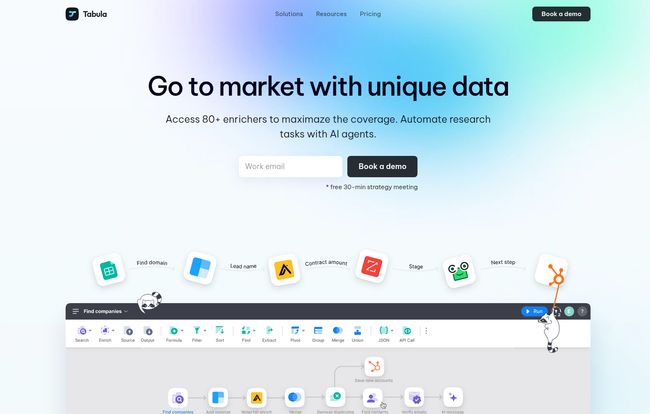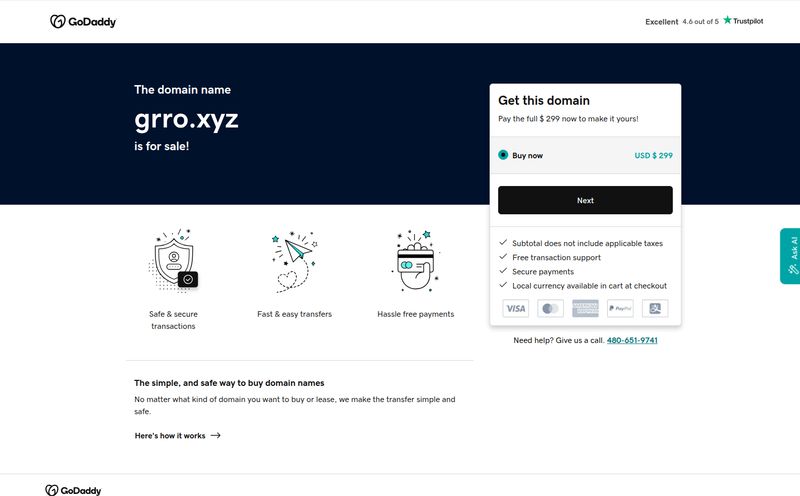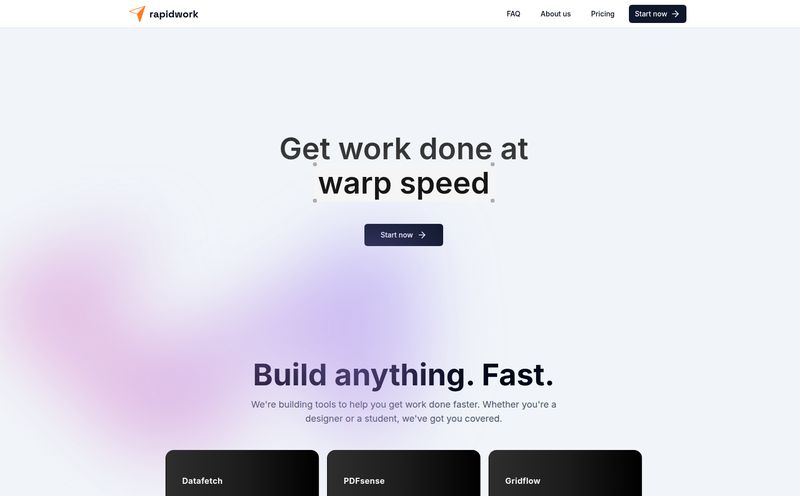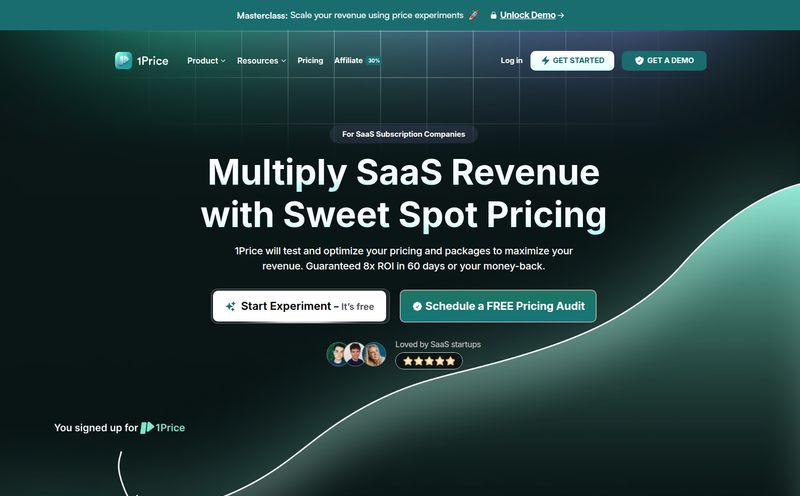Alright, let’s have a chat. If you’re in the world of RevOps, marketing, or you’re a founder wearing a dozen hats at a startup, you know the pain. The data pain. It’s that special kind of headache that comes from juggling ten different spreadsheets, trying to stitch together customer information from a half-dozen sources, and praying your CSV import doesn't crash the system. Again.
For a while, a tool called Clay was the cool kid on the block, and for good reason. But I’ve heard the whispers, and I’ve felt the pain myself—the dreaded feeling of hitting your credit limit just when you’re getting into a good workflow. It’s like being on a roll at a casino and suddenly running out of chips. Frustrating, right?
So when I started seeing chatter about Tabula, I was intrigued. It's positioning itself not just as another tool, but as a direct answer to the limitations many of us have felt. They’re talking about unifying teams, automating the grunt work with AI, and doing it all with transparent pricing. Big promises. But as a professional SEO blogger who's seen more 'game-changing' platforms than I can count, I'm naturally skeptical. So, I decided to take a proper look. Is Tabula just another flash in the pan, or is it the real deal?
So, What Exactly is Tabula Anyway?
Before we get into the nitty-gritty, let's clear up what Tabula actually is. At its core, Tabula is an AI-powered data tool designed to be the central hub for all your business data. Think of it as a translator and a traffic cop for information. It connects to all the different places your data lives (your CRM, your marketing tools, your databases), and helps you clean it, enrich it, and put it to work without needing a team of data engineers on standby.
The whole idea is to break down the walls between your business teams (sales, marketing) and your data teams (the analysts). Instead of marketing exporting a list, sending it to an analyst to enrich, getting it back a week later, and then re-uploading it... Tabula wants all that to happen in one fluid motion. A single source of truth. It's a nice thought, and honestly, a necessary one for any business that wants to move fast.
The Big Question: Is Tabula a Real Clay Killer?
Let's address the elephant in the room. The comparison to Clay is unavoidable because Tabula practically invites it. On their own site, they have a headline that says, “Built for teams who’ve hit the ceiling with Clay credits and complexity.” That’s not a subtle jab; that’s a direct challenge. And I’m here for it.
In my experience, tools like Clay pioneered a new way of thinking about data enrichment, but their credit-based model can become a bottleneck. You find a great workflow, you start scaling it up, and BAM—you’re either shelling out a ton of cash for more credits or you're forced to stop. Tabula’s approach feels different. It seems to be built on the idea that you shouldn't be penalized for being successful with the tool.
It’s less about being a “killer” and more about offering a different philosophy. Clay feels like a high-performance race car that costs a fortune to fuel up. Tabula feels more like a custom-built, all-terrain vehicle—powerful, flexible, and you can bring your own gas (API keys) to keep costs down. A very compelling proposition if you ask me.
My Favorite Tabula Features (And What They Actually Mean)
A feature list is just a list. What matters is how those features solve real problems. After playing around, a few things really stood out to me as being genuinely useful.
Waterfall Enrichment and Branching Logic
This sounds super technical, but it’s actually one of the most practical features. Imagine you’re trying to find a valid email for a list of leads. A “waterfall” lets you set up a sequence. For example:
1. First, check Apollo.io for an email.
2. If nothing is found, then check Hunter.io.
3. If still nothing, then try to guess a common email pattern.
This sequential, logical flow is incredibly powerful. It maximizes your chances of finding data while minimizing your costs, because you're not blasting every single provider for every single lead. It's just... smart. You’re not wasting API calls or credits. The branching logic is the cherry on top, letting you create different paths based on the data you find. It’s like having a little data detective working for you 24/7.

Visit Tabula
The “No More Column Sprawl” Promise
If you've ever opened a spreadsheet that scrolls horizontally for what feels like an eternity, you know the pain of “column sprawl.” It’s a nightmare of messy, duplicated, and often conflicting information. Tabula is designed to combat this by keeping data flows clean and structured. Instead of ending up with 10 different columns all named something like “Email_Final_v2_use_this_one”, you get clean, processed data where you need it. It might sound like a small thing, but for anyone who values their sanity, it’s a massive quality-of-life improvement.
Bring Your Own API Keys
This is a big one. Many platforms lock you into using their own data providers, often at a markup. Tabula allows you to plug in your own API keys for over 80+ enrichment providers. If you already have a subscription to a service like Clearbit or ZoomInfo, you can just connect it and use your existing plan. This gives you so much more control over your costs and your data sources. You're not stuck in a walled garden.
Let's Talk Turkey: Tabula's Pricing
Pricing can make or break a tool. I appreciate that Tabula is upfront about it, with a page titled “Transparent pricing with no hidden fees.” Let's see if that holds up.
Here’s a quick breakdown of their main plans:
| Plan | Price | Who It's For |
|---|---|---|
| Free | $0 / month | A single user who wants to test the waters. You can bring your own API keys, but things like AI Enrichments are a trial. Good for a look-see. |
| Solo | $29 / month | The real starting point for an individual or a solopreneur. This is a base price, and you buy credits for features like the AI helper or using Tabula's data connectors. |
| Team | $99 / month | For small teams that need to collaborate. Includes 3 users and offers more advanced features and support. |
| Enterprise | Contact for Pricing | For larger businesses with heavy-duty data needs and 10+ users. |
My take? The model is fair. The $29 base for the Solo plan is very reasonable, and the pay-as-you-go credit system for advanced features means you're only paying for the power you actually use. It’s a much more predictable and scalable model than getting locked into a high tier just to access one feature.
The Not-So-Perfect Parts (Because Nothing Is)
Look, no tool is perfect. While I'm pretty impressed with Tabula, it’s only fair to point out a couple of potential bumps in the road.
First, if you want to build truly complex, custom workflows, there might be a bit of a learning curve. It’s not a simple point-and-click tool for every single advanced function, and that’s okay. Power requires a little bit of know-how. If you're completely non-technical, you might need to stick to the more straightforward templates initially.
Second, while the credit system is a pro in my book, it's still a credit system. You'll need to monitor your usage for things like the AI helper to manage costs. Also, some features are still in devlopment, which is typical for a newer platform but something to be aware of. It's a platform that's clearly growing, which is exciting but can also mean occasional growing pains.
Frequently Asked Questions about Tabula
I see these questions pop up a lot, so let's just tackle them head-on.
- What's the real deal with the Free plan?
- The Free plan is genuinely free and it's surprisingly capable. It's for one user and lets you bring your own API keys, which is huge. It's the perfect way to actually try out the core workflow builder without any financial commitment.
- Can I really bring my own provider API keys?
- Yes, absolutely. This is one of its biggest selling points. If you're already paying for other data services, you can plug them right into Tabula and leverage those subscriptions.
- How does Tabula’s flexible pricing work?
- You pay a base monthly fee for your plan (e.g., $29 for Solo). For certain built-in features, like using Tabula's data sources or their AI tools, you purchase credits. This way, if you only use your own API keys, your cost stays low. If you need their premium data, you pay for just what you use.
- Is there a discount for an annual plan?
- The pricing page mentions an annual billing option, and typically services like this offer a discount (usually around 10-20%, or 1-2 months free) for paying upfront. You'd likely need to toggle the billing cycle on their pricing page to see the exact rate.
- Can I cancel my plan whenever I want?
- Yes. The site states you can cancel anytime. This is standard and expected for modern SaaS tools, and it's good to see they follow that customer-friendly model.
- What happens to all my data if I cancel?
- This is a critical question. According to their FAQ, if you cancel, you should make sure to export any data you want to keep. Your access to the platform and its data will be removed at the end of your billing cycle. Always a good practice to back up your work!
Final Thoughts: Is Tabula Worth Your Time?
After spending some quality time with Tabula, I'm genuinely optimistic. It's not just another data tool; it's a thoughtful response to a real set of problems in the market. It successfully bridges the gap between powerful data automation and accessibility for teams that don't have a bottomless budget.
Is it for everyone? Maybe not. If you have a massive enterprise team with a long-established, complex data stack, migrating might be a huge project. But if you’re a startup, a scale-up, a marketing agency, or a RevOps team that has felt the sting of credit limits and data silos, then my answer is a resounding yes.
Tabula offers a path to sophisticated data enrichment and automation that feels both powerful and sustainable. If you’ve ever wished you could build smarter lead lists or create a true 360-degree view of your customer without taking out a second mortgage, then you owe it to yourself to give Tabula’s free plan a spin. It might just be the breath of fresh air your data stack needs.



